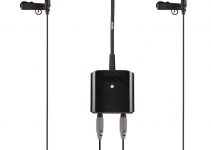In 2014 shooting a short or a feature film on an iPhone or any other smart device fitting in a pocket could be hardly surprising for any of us.
There are plenty of examples already where iPhones were used as a primarily shooting device on professional commercial and movie sets as well. There’s even an app that can turn your iPhone 5S into a 4K camera (at a price!).
Further, the market is over saturated with rigs, lens adapters, gimbals and other gadgets that easily could turn any smart phone into a very usable filmmaking tool. Yet, there are many limitations compared to the dedicated professional cameras, however with those restraints in mind, it is still possible to use an iPhone successfully as a professional device in certain shooting situations.
After the recent release of iPhone 6 and the beefier iPhone 6 Plus many filmmakers have even more options to deliver great images as some interesting new features were added to the brand new flag-ship Apple device. Features such as super slow-motion and capturing video up to 240fps, time-lapse feature, Optical Image Stabilization, new 8 Megapixel sensor and calibrated sRGB larger display.
Here are the other added features to iPhone 6 and iPhone 6 Plus:
- Increased image quality
- Apple-designed image signal processor
- 2x quicker autofocus
- Continuous autofocus while shooting video
- Optical image stabilization
- New “cinematic” stabilization mode for video
- Record 1080p at 30fps and 60fps
- Record slow motion video at both 120fps and 240fps (720p)
- New native time-lapse capabilities
- f/2.2 aperture
- 8MP iSight camera
In this post we have covered some of the most interesting videos released on the web so far shot entirely with the brand new iPhone 6 and 6 Plus versions.
iPhone 6 Slow Motion Wine Pour 240fps from Osborne Images on Vimeo.
Fire and Water – iPhone 6/6 Plus Slow Motion 240fps Cinematic Camera Test from SuperSaf (Safwan Ahmedmia) on Vimeo.
3 Days with the iPhone 6+ from Uncage the Soul Productions on Vimeo.
Both, the iPhone 6 and iPhone 6 Plus feature a 5 element lens with an updated 8 megapixel iSight camera with 1.5µ pixels and an f/2.2 aperture. Other features of both cameras include a True Tone flash, backside illumination, and more. The only difference between the two is that the iPhone 6 Plus features optical image stabilization (OIS) while its smaller counterpart does not. The optical stabilisation in the iSight camera of the bigger iPhone 6 Plus may offer a significant advantage for those who’ll shoot plenty of photos and video.
When picking the iPhone 6 Plus version you should be careful with carrying it in your pocket though. Since the new model started shipping last Friday, a small but growing number of iPhone 6 Plus early adopters have reported a “bending” issue that significantly alters the appearance of the phone.
The problem is due to the phone’s thin aluminum exterior – but can be solved by ensuring the middle of the phone is not subjected to a large force.
You can see the “bending” test of iPhone 6 produced by Unbox Therapy below.
The lack of 4K shooting capabilities, larger sensor, “video-ish” image quality and the design flaws could be an argument for many filmmakers not to use the new iPhone 6 and 6 Plus as professional video tools, for this moment at least. However the addition of high frame rates, albeit at HD resolution (60p is at Full HD 1080p) and improved camera, plus the 1920×1080 5.5″ touchscreen might be enough for most to compensate for the lack of 4K video and a larger MP resolution camera maybe.
Nevertheless, it is clear that smart phone technology is heading into the right direction in terms of integrating more and more useful features that could be extremely beneficial for the filmmakers community, both now and in the future.
Disclaimer: As an Amazon Associate partner and participant in B&H and Adorama Affiliate programmes, we earn a small comission from each purchase made through the affiliate links listed above at no additional cost to you.



